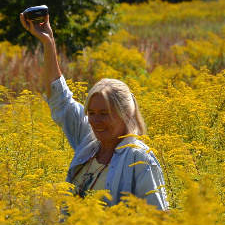Remote Sensing of Invasive Alien Species—towards Effective Monitoring and Management (Second Edition)
A special issue of Remote Sensing (ISSN 2072-4292). This special issue belongs to the section "Ecological Remote Sensing".
Deadline for manuscript submissions: 15 July 2024 | Viewed by 111
Special Issue Editors
Interests: environmental science; ecological engineering; geoinformatics; remote sensing; hydrological modeling
Special Issues, Collections and Topics in MDPI journals
Interests: biodiversity and ecosystem services; ecology and distribution of invasive species; nature conservation; remote sensing
Special Issues, Collections and Topics in MDPI journals
Special Issue Information
Dear Colleagues,
This is the 2nd edition of the Special Issue “Remote Sensing of Invasive Alien Species—towards Effective Monitoring and Management”.
Globalization through increased trade, transport, travel, and tourism inevitably increases the intentional or accidental introduction of various organisms to new environments. Invasive alien species (IAS) are recognized as one of the most important threats to biodiversity on a global scale, and the problem has been addressed in many international and national documents.
Aichi Target 9 of the Strategic Plan for Biodiversity 2011–2020 under the Convention of Biological Diversity and Regulation (EU) 1143/2014 on invasive alien species (the IAS Regulation), fulfilling Action 16 of Target 5 of the EU 2020 Biodiversity Strategy, as well as national strategies on IAS, have outlined the essential goals that require research and education, practical actions, and organizational and legal solutions.
One of the crucial tasks is to develop objective and effective methods and tools to identify and map the distribution of IAS on various spatial and temporal scales. Remote sensing technologies in this field have advanced rapidly in recent years and are increasingly being adopted in various fields of science and sectors of the economy (e.g., nature conservation, forestry, agriculture, water management, spatial planning).
This Special Issue aims to collect recent research results and experiences related to their implementation in practice. It is dedicated to the use of remote data acquisition technologies concerned with the detection, mapping, and monitoring of invasive alien species (IAS), enabling their widespread use in further research and in various sectors of the economy. We also encourage you to share research that did not deliver the expected results and to discuss the limitations of the methodology used, which will allow us to develop the most effective, transferable, and least costly procedures.
Topics include but are not limited to the following:
- Influence of spatial and spectral resolution on the quality of invasive species detection—practical constraints and possible opportunities;
- Effectiveness of data fusion in IAS identification;
- Classification algorithms utilized in IAS identification;
- Spectral discrimination of IAS;
- Machine learning and AI in IAS identification;
- Invasive species detection: weaknesses and strengths of remote sensing methods;
- Distribution mapping of IAS and tracking their spread on different spatial scales;
- Invasion monitoring with remote sensing for the development of the national, subnational, or site-based observation and monitoring systems for IAS;
- Early detection of IAS: new and relevant methods and variables to use for rapid response;
- Risk assessment of IAS through remote sensing;
- Detection of landscape dynamics caused by IAS by the integration of multiple complementary tools;
- Multitemporal analysis for IAS mapping;
- Multiscale assessment of the occurrence and diversity of invasive plant species;
- Management planning for protected areas and administrative units with the use of remote sensing and integrated tools;
- Invasive species control programs: the use of remote sensing in planning the control/eradication and evaluation of effects.
Dr. Sylwia Szporak-Wasilewska
Prof. Dr. Barbara Tokarska-Guzik
Guest Editors
Manuscript Submission Information
Manuscripts should be submitted online at www.mdpi.com by registering and logging in to this website. Once you are registered, click here to go to the submission form. Manuscripts can be submitted until the deadline. All submissions that pass pre-check are peer-reviewed. Accepted papers will be published continuously in the journal (as soon as accepted) and will be listed together on the special issue website. Research articles, review articles as well as short communications are invited. For planned papers, a title and short abstract (about 100 words) can be sent to the Editorial Office for announcement on this website.
Submitted manuscripts should not have been published previously, nor be under consideration for publication elsewhere (except conference proceedings papers). All manuscripts are thoroughly refereed through a single-blind peer-review process. A guide for authors and other relevant information for submission of manuscripts is available on the Instructions for Authors page. Remote Sensing is an international peer-reviewed open access semimonthly journal published by MDPI.
Please visit the Instructions for Authors page before submitting a manuscript. The Article Processing Charge (APC) for publication in this open access journal is 2700 CHF (Swiss Francs). Submitted papers should be well formatted and use good English. Authors may use MDPI's English editing service prior to publication or during author revisions.
Keywords
- spatial and spectral resolutions
- data fusion
- machine learning
- classification algorithms
- spectral discrimination
- invasive species
- distribution mapping
- invasion monitoring
- early detection
- risk assessment
- landscape dynamics
- multitemporal analysis
- multiscale assessment
- management planning
- invasive species control programs






